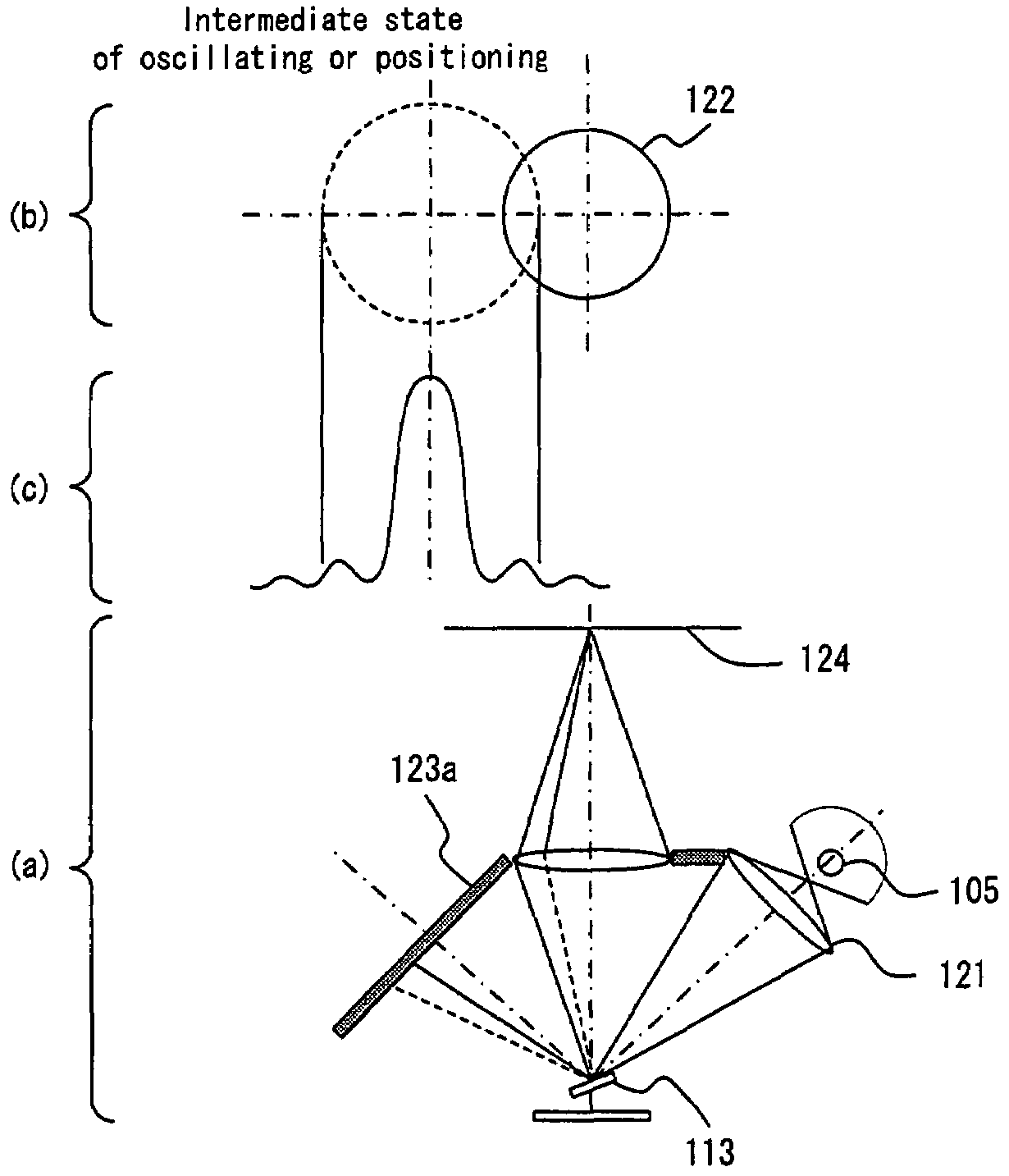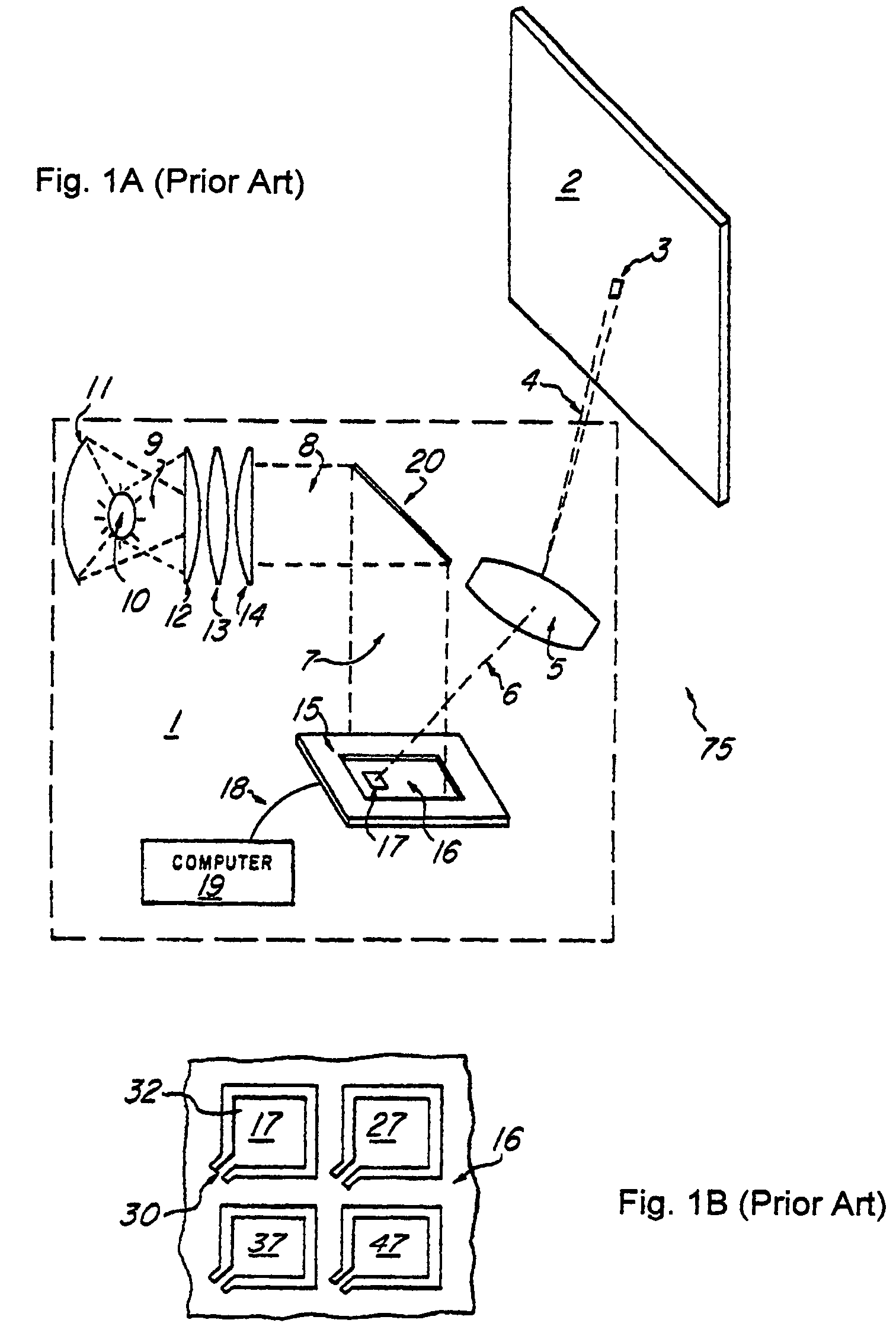Increase gray scales of projection system by reflecting light from mirror elements with non-uniform intensity distribution
a technology of projection system and mirror element, applied in the field of image display system, can solve the problem of adding gray scale, and achieve the effect of low operational voltage and flexible control of gray scale of display
- Summary
- Abstract
- Description
- Claims
- Application Information
AI Technical Summary
Benefits of technology
Problems solved by technology
Method used
Image
Examples
first embodiment
[0041]A description will first be made of the basic configuration of the projection system according to a first embodiment of the invention with reference to FIGS. 2 and 3.
[0042]FIG. 2 is a system diagram of the projection system according to this embodiment. The projection system projects images on a screen or other kinds of display surface (not shown) according to image signals inputted to a controller 101. The controller further accesses data stored in a memory 102 for controlling a deflectable spatial light modulator (hereinafter simply referred to as “SLM”) 103. The controller 101 further controls a light driver 104 that receives an incident light from a light source 105. The projection system may further include a motor driver 106 to drive a color wheel included in a filter unit 107 in order to display color images.
[0043]The controller 101 controls the SLM 103 and the drivers 104, 106 to project an image according to an input image signal. The memory 102 stores data necessary ...
second embodiment
[0061]The projection system according to a second embodiment of the invention is a system in which the direction of the optical axis of the Intermediate light is limited. Other than the limited range of optical axis direction, the key configuration of the projection system according to the second embodiment is the same as that of the projection system according to the first embodiment described above.
[0062]The projection system according to this embodiment is configured such that for each of the deflectable spatial light modulating elements in the SLM 103. The optical axis of the Intermediate light lies in the space between two planes inclined ±15 degrees to the plane A including the optical axis of the light originating from the light source 105 and incident on the mirror plate and the optical axis of the OFF light. The plane A and the two planes having an incline angle of ±15 degrees relative to the plane A intersect on the reflection plane of the mirror plate.
[0063]FIGS. 5A to 5E...
third embodiment
[0078]The projection system according to a third embodiment of the invention is a system in which the direction of the optical axis of the Intermediate light is limited within a range that is different from the projection system according to the second embodiment described above. The key configuration of the projection system according to the third embodiment is the same as that of the projection system according to the first embodiment described above.
[0079]The projection system according to this embodiment is configured such that in each of the deflectable spatial light modulating elements in the SLM 103, the optical axis of the Intermediate light lies in a cone. the center axis of rotation of the cone is a normal to the deflectable spatial light modulating element. The curved surface of the cone includes the optical axis of the OFF light. The projection system according to this embodiment includes two light sources. The light source is configured such that the light beams from th...
PUM
 Login to View More
Login to View More Abstract
Description
Claims
Application Information
 Login to View More
Login to View More - R&D
- Intellectual Property
- Life Sciences
- Materials
- Tech Scout
- Unparalleled Data Quality
- Higher Quality Content
- 60% Fewer Hallucinations
Browse by: Latest US Patents, China's latest patents, Technical Efficacy Thesaurus, Application Domain, Technology Topic, Popular Technical Reports.
© 2025 PatSnap. All rights reserved.Legal|Privacy policy|Modern Slavery Act Transparency Statement|Sitemap|About US| Contact US: help@patsnap.com



